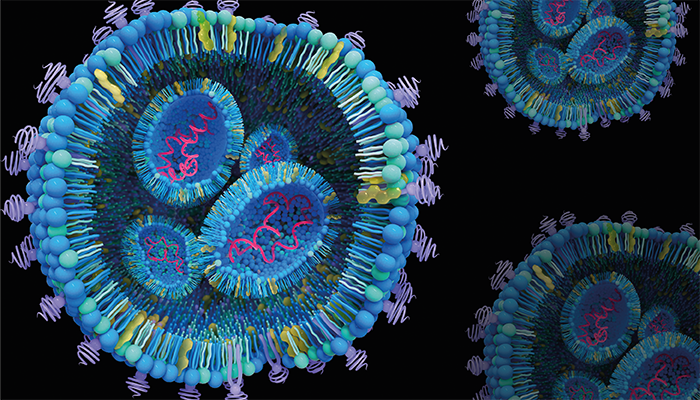
Credit: Adobe Stock
A nuclear magnetic resonance (NMR)-guided approach has revealed how different methods of mixing small interfering RNA (siRNA) with lipid nanoparticles (LNPs) can significantly impact their molecular structure and gene-silencing efficiency. The findings offer a deeper understanding of how the internal structure of LNPs influences their therapeutic effectiveness and could lead to more effective gene therapies and RNA-based medicines.
“NMR allowed us to peer inside these nanoparticles at a molecular level, revealing the intricate details of how siRNA is distributed within the LNP core. This level of insight is crucial for understanding and optimizing LNP formulations,” said lead author Keisuke Ueda, assistant professor at Chiba University, in a press release.
The study compared three different methods for incorporating siRNA into LNPs: pre-mixing, where siRNA and lipids are combined early in the process; and two post-mixing methods, where siRNA is added to pre-formed LNPs, either with or without ethanol. All methods produced nanoparticles of a similar size (approximately 50 nm), but the internal distribution of siRNA within the LNPs varied significantly depending on the method used.
According to the study, pre-mixed LNPs exhibited a more uniform distribution of siRNA, whereas post-mixed LNPs showed regions of both high and low siRNA concentration, leading to heterogeneity. "This heterogeneity can significantly impact the silencing effect of the siRNA. LNPs with a more uniform siRNA distribution are more likely to deliver their therapeutic payload to target cells effectively," explained Ueda in the press release.
In addition to solution-state ¹H NMR, the team also used small-angle X-ray scattering (SAXS) and cryogenic transmission electron microscopy (cryo-TEM) to further analyze the internal structure of the LNPs. SAXS data indicated that pre-mixed LNPs formed a tightly packed, stacked bilayer structure where ionizable lipids were closely associated with siRNA, enhancing the nanoparticles’ ability to silence genes. In contrast, post-mixed LNPs showed a more disordered structure, which could reduce their ability to fuse with cell membranes and deliver siRNA to target cells. These findings were corroborated by gene-silencing tests, which showed that pre-mixed LNPs outperformed post-mixed LNPs.
“These findings could improve people’s lives by enhancing gene therapies and RNA-based medicines,” Dr. Ueda added. “By optimizing how siRNA is delivered using lipid nanoparticles, treatments for diseases like cancer, genetic disorders, and viral infections could become more effective.”




